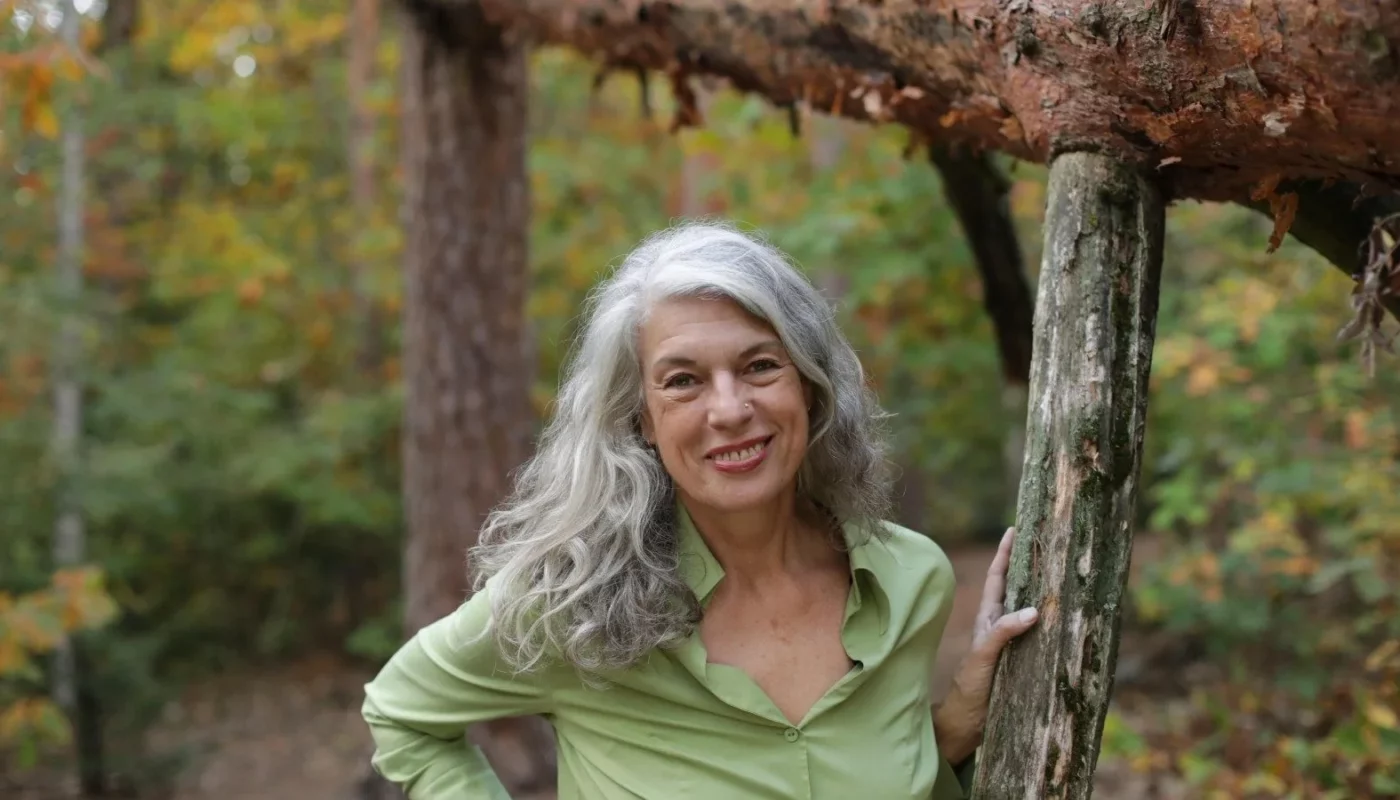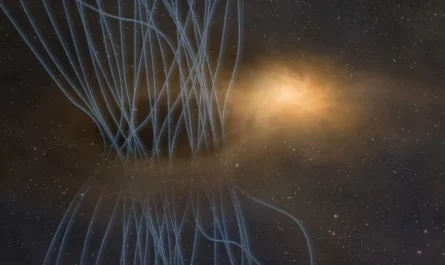Berlin. The psychologist and forest coach Suse Schumacher knows the powers that can be experienced and found in the great outdoors. A book excerpt.
Suse Schumacher is a psychologist and podcaster who lives with her family in Berlin. As a nature therapist, she enjoys working with her clients in the forest. She explains why in this excerpt from her new book.
The nest appears to be empty. Is the wren flown out or moved out? Three weeks ago I looked out my kitchen window and the female looked back curiously. Since then there has been silence in the nest. The answer to my question comes unexpectedly. It’s May, I’m sitting in the garden and writing this book. Suddenly, out of the corner of my eye, I notice something fluttering towards me and landing on my hat. I keep my head still. A little bird actually sat on my hat. I hold my breath and remain motionless. Then the little one flies on. I watch him disappear under the eaves over the kitchen window. My heart becomes warm. The wren still lives here. And he’s obviously not afraid of me. I smile and am very touched.
I used to go for a normal walk in the forest. Like most people, I was chatting with friends. Or I turned my little one Jogging session. I noticed the peace, the coolness, the good air, but hardly anything of the complex beauty around me. I was busy with myself. I felt that the peace and quiet of the forest was good for me to recover from the strenuous city life. But trees, plants or animals were just a backdrop, nothing more. Many people probably feel the same way. You go for a walk, do sports, maybe collect food. You consume the forest.

© Publisher | Publisher
With my training to Natural therapist I learned to approach the forest in a new way – less as a consumer and more as a partner. Now I try to put my heart in the forest. What was once just a walk is now a deep, touching encounter. A connection with nature develops. Awe, gratitude and love emerge, which are expressed in emotion and sometimes in tears of joy. It’s the feeling of being part of something much bigger. A silent understanding that goes deeper than reason, combined with deep, intuitive knowledge. Being like this, being here, being one. Inside and outside seem to dissolve. Seeing and understanding with the heart.
The sociologist Hartmut Rosa speaks of a “resonance relationship with nature” if we allow it. An old tree can be seen as a source of wood, but also as a living being that is networked in many ways with its environment and offers protection, building materials and food to hundreds of fellow creatures – from microorganisms to hedgehogs. “There is a living something, a stubborn force, and this creates the desire to connect with the other person and to receive an answer,” says Rosa, “not a substantive answer to a specific question, of course, but the perception of an inner one and also physical connection or togetherness in an interwoven whole.” According to Rosa, when we experience resonance, “a vibrating wire arises between us and the world.” A wonderful definition of life.

© . | Susan Schumacher
Perceiving means hearing, seeing, feeling, tasting or smelling. Perceiving with the heart goes beyond this. We are aware of nature, people and the world and feel them empathically and lovingly, not as distant observers, but as a part of it. We understand without hastily judging, wanting to change or control something. We allow intuition. Seeing with the heart requires Sensitivity and opennessthe ability to perceive one’s own feelings and sensitivities without identifying too much with them, and the courage to say goodbye to everyday pragmatism focused on utility.
Erich Fromm In this context, coined the term “biophilia” and understood it as the “passionate love of life and everything living; it is the desire to promote growth, whether of a person, a plant, an idea, or a social group. The biophilic person would rather build something new than preserve the old. He wants to be more instead of having more.”
A person who opens himself to love and therefore his heart sees the world in all its facets: its beauty, but also the problems that he alone cannot change. Seeing with the heart is more than sensory perception; it is an art that can be learned. The key lies in our attitude, whether towards the forest, towards our fellow creatures or towards the richness of life. For me, freedom means being able to decide at any moment whether we remain in a material world dominated by numbers or move into a colorful universe full of compassion, joy and treasures. If we choose a sensual connection with nature and open our hearts, then the world becomes a treasure trove of life.

© . | Susan Schumacher
Whether it’s a captivatingly beautiful sunrise, the view of the valley after a strenuous mountain climb or the calm of a cool forest lake with wafts of mist wafting over it – all of these are moments in which the heart can suddenly open. We are deeply touched and filled with gratitude. We cannot control these moments. Our heart cannot be bossed around, but it can certainly be seduced by unintentional sensuality. The less we want, demand or expect, the more connected we are. Love is the opposite of control. Love is the courage to exist.
But how do we move into this state of love? By lovingly but firmly pushing our head with our monkey mind from the wheel to the passenger seat. For a while we don’t think in the cost-benefit categories we’ve learned and treat every moment, every encounter like a treasure. Your mind may ask: Is it worth it? The heart responds with a smile. A tender, unintentional perception can open our hearts. That is the Practice of mindfulness. We become more conscious, more sensitive, more awake, more careful and more tender.
People in the forest
To use my favorite motif: When we are out in the forest, a big old tree can touch us deeply if we manage to let go of our usual thought patterns. The To be touched opens our hearts. We perceive the unshakable presence of the tree. We feel the majesty, liveliness and power of this being, which has already experienced many a storm, icy temperatures or tormenting drought. With a little imagination we can guess the fates of the people who rested in his shadow. We can also look at the same tree from our critical everyday perspective. His presence suddenly changes. We see a victim of water shortage, interpret the withered crown and worry about climate change. We see breakage and decay and perhaps consider the danger of branches breaking in the next storm. Does the insurance cover this damage?
We can approach the old tree from these two basic attitudes: rational and caring or with loving reference. From a critical perspective, we apply the standard of a perfect tree and primarily see deficits or dangers. We evaluate from a critical distance. The tree remains an object and does not touch us.
It’s not about turning off your mind
Loving reference, on the other hand, wants connection and resonance. The tree is not an object, but an independent subject, a living being that allows itself to be loved unconditionally – just for its existence. Perfection is not a category of love. Unconditional love does not compare because the ideal already exists – in this tree. It’s about an attitude of connection that applies to the whole of life. But be careful: One of the biggest misunderstandings on the way to the heart is the assumption that we have our… Turn off your mind should. The opposite is true. It’s not about swapping one for the other, but rather finding a balance. Because heart and mind are connected. Only in their balance does connection arise.
From this point of inner harmony, the heart can open and engage in this one moment without prejudice. Connecting with what you are currently experiencing is love. Whenever we succeed in doing this – whether with a person, a thing or a fellow creature – a touching connection takes place. Then we are in Contact with ourselves and relate to the living world around us. Through loving reference we perceive the preciousness and beauty of the moment. Love arises in connection with all living things and is attracted to beauty.



